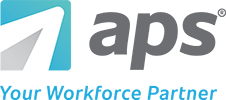Switching payroll providers mid-year can seem overwhelming whether you’ve gone through the process before or not. You may be concerned about making the right software decision or potential disruption to your current payroll processing. However, if your year-end processing was challenging, it might be time to consider a change.
To help you make an informed decision, we’ve compiled some tips for a successful mid-year payroll conversion. Our goal is to help you choose the right system for your needs while mitigating the difficulties that can be associated with a payroll provider transition.
What is a Payroll Conversion?
A payroll conversion is the process of migrating from one payroll software system to another or outsourcing payroll workflows to a new payroll provider. Mid-year conversions typically start between April and July. The amount of time it takes to switch to a new payroll solution depends on:
- The complexity of your payroll and taxes
- If you’re using any integrations with existing systems or having any developed
- If you’re planning to implement other solutions like HR or time and attendance
Starting the conversion process mid-year ensures a smooth transition so you can process your first new payroll well before the year-end season.
Ready to Make Your Payroll Easier?
When is the Best Time to Switch Payroll Providers?
Many companies typically switch payroll providers at the beginning of the year to have a fresh start in a new system. However, you can make a change any time of the year if you’re unsatisfied with your current payroll vendor or process.
Converting at specific times of the year provides a seamless payroll data transition. Mapping timeframes helps decrease the risk of lost information when transitioning data from one system to another. Tax specialists rely on historical payroll data when sending filings and payments to the IRS. Selecting timeframes makes record transfers and IRS uploads easier.
One major factor contributing to a successful implementation is to ensure you are working with an experienced, knowledgeable payroll and HR provider. It’s essential to partner with a company that understands your unique challenges and is committed to your success.
How to Switch Payroll Providers Mid-Year
Switching to a new payroll provider mid-year decreases the risk of missed or lost information during implementation. So let’s talk about more tips for successfully converting to a new payroll provider in the middle of the year. Making a change may be the best thing you accomplish this year.
1. Meet With Your Current Payroll Software Company
While meeting with your current provider might sound like a no-brainer, many businesses don’t have a conversation with their existing software company before switching systems. There are a couple of reasons you’d want to meet with your current payroll software vendor before making a change:
- To review your existing contract and determine how much notice you need to give before canceling your agreement.
- To ask about your current software agreement so that you can budget for any additional fees associated with your departure.
2. Research Alternative Solutions
Researching other payroll solutions empowers you to make an informed software decision. The more comprehensive you are in your vetting process, the easier it will be to choose the best software for you. Software rating sites like G2 and Capterra and resources like buyer’s guides can help.
Software review platforms provide free vendor comparisons and lists of features and benefits of each solution. They also rank software based on authentic user feedback. This insight from verified customers lets you know what your peers think about using that solution, enabling you to make an informed decision.
3. Discuss Your Needs With Prospective Providers
Once you have an idea of what solution you might be interested in, it’s time to schedule a demo and discuss your needs. We list some questions you can ask a new provider later in this article.
When you meet with a new vendor, have a list of must-haves and nice-to-haves ready. Identify what items you need, and discuss which items are negotiable. Ultimately, this process will give you a better understanding of how a new vendor can help you achieve your payroll needs.
4. Ensure Your Payroll Data is Easily Accessible
One final tip for switching payroll software providers is to ensure your payroll data is easily accessible. New vendors will need as much information as possible before getting your new system up and running. This data migration is most easily accomplished with access to your current payroll system.
You need to gather your payroll data from your previous provider, limiting the time it takes to transition software systems and mitigating data errors. Ask your new provider for a payroll conversion checklist.
Switching Payroll Companies Checklist
This payroll transition checklist provides you with everything you need when changing payroll providers mid-year.
Questions to Ask When Switching Payroll Companies
During your research and evaluation process, ask the following questions to determine if a new provider taking over payroll mid-year can accurately and adequately handle your conversion:
- What are the difficulties of switching payroll companies mid-year?
- Who will be involved in the conversion process?
- What is the process for communicating your unique needs to your implementation project manager for proper data setup?
- Will there be a dedicated project manager who provides a project plan with clear deadlines?
- Will the provider convert your data and import your payroll and employee history into their system?
- Will a payroll assessment be conducted to reconcile your data history?
- Will the new provider run parallel payrolls before the first live payroll submission to confirm data and tax settings are accurate?
- Does the provider offer integrations with other systems you use, like retirement plans and general ledger packages?
- Will the provider conduct live training using your company data?
- Will you have a dedicated customer support team that is easy to reach via phone or email?
- Will the provider assign you a dedicated success coordinator to help you get the most out of your investment?
- Does the provider have solutions specialists on staff to help with more complex questions and needs?
- Does the provider offer a help center with additional resources at your disposal?
What Do I Need When Switching Payroll Companies?
Knowing what payroll data you will need to give your new provider will ensure a smooth mid-year conversion process. Here are the critical pieces of information you’ll need to provide:
- Employee list with social security numbers and addresses, as well as direct deposit information for each employee
- Company bank account information and tax ID numbers (federal, state, and local)
- State unemployment rates for all states in which you report
- A list of employee deductions (e.g., health insurance, 401K)
- Copies of employee W-4s, garnishment orders, and current year Form 941 payroll filings (if available)
- Year-to-date payroll summary per employee, per quarter
For a more straightforward migration process, you can collect a list of employee emails and issues with federal, state, and local agencies. Include copies of correspondence with government entities. Your current provider can assist in gathering the payroll information. Ask for a payroll migration checklist so it’s easier to keep track of data.
Make a Change for the Better
Switching payroll providers can be an overwhelming process, but you don’t have to wait until the beginning of the year to make a change. Mid-year can be an ideal time to convert to a new payroll service.
Don’t continue to settle for an ineffective provider. Instead, make the switch now to payroll software that meets your company’s needs so that you can feel confident in your payroll processing.
How APS Can Help With A Mid-Year Transition
We understand the time and commitment it takes to switch payroll providers, so we work hard to ensure your transition is effortless and smooth. Because of our dedication to your success, we’ve earned awards for our Implementation process and above-average User-Adoption ratings.
We follow a proven conversion process to ensure a smooth implementation experience:
- Tax-catch up and payroll history verification
- Payroll services that include year-end processing, tax filing, integrations, and more
- Guaranteed tax compliance reducing your compliance risk and financial burden
- Continued support and service from a dedicated account team committed to your success
- Advanced multi-level protocols so your data transfer is safe and secure
- Dedicated success coordinator who will help you achieve usability, adoption, and return on your investment





